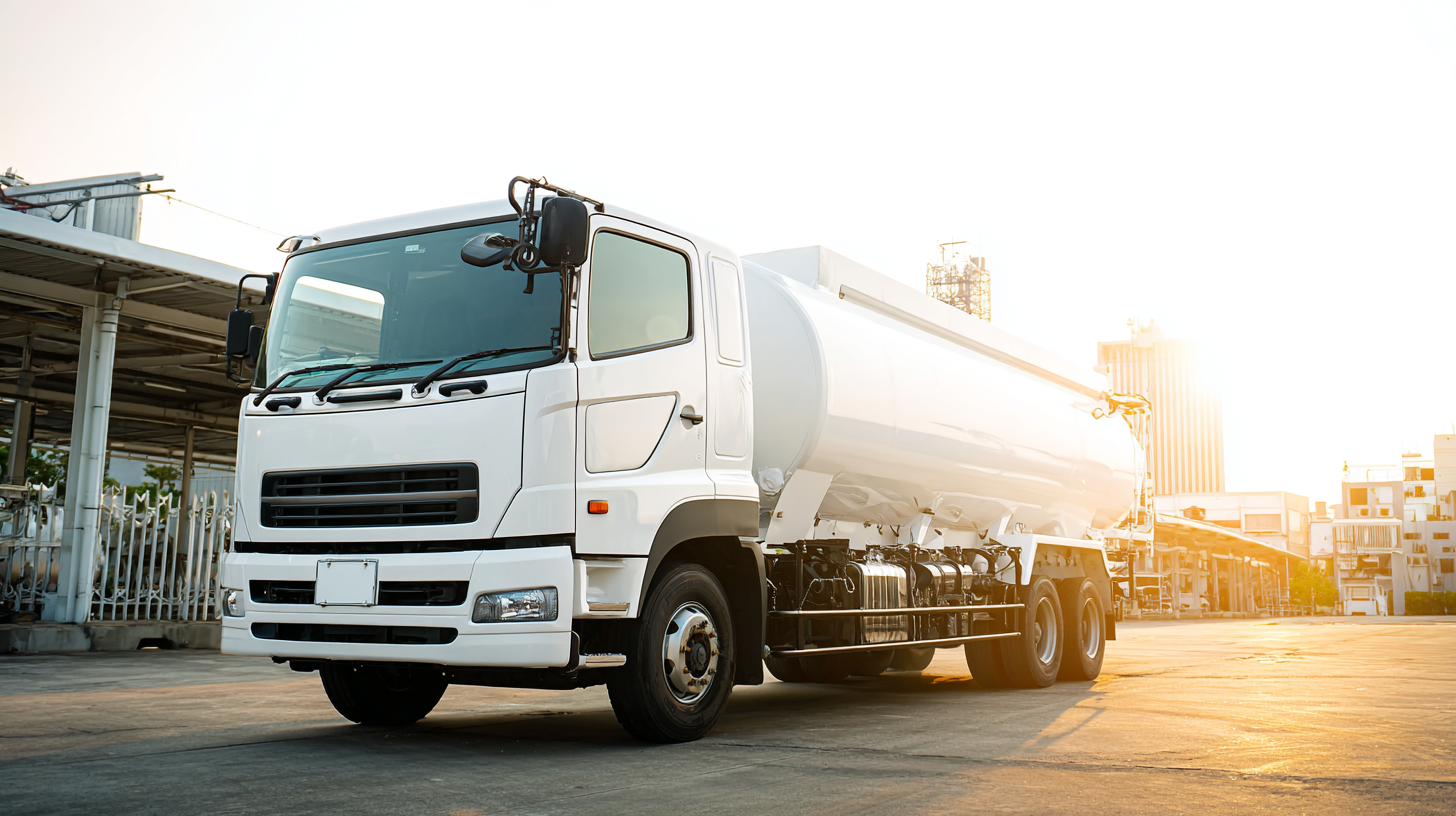7 Secrets to Choosing the Best Drum Truck for Your Business Needs
Choosing the right equipment for your business is crucial for efficiency and productivity, especially when it comes to handling heavy materials. One essential tool that can significantly enhance your operational workflow is the drum truck. These versatile carts are designed to transport and maneuver heavy drums with ease, making them a vital asset in warehouses, manufacturing plants, and distribution centers.

However, with numerous models and features available on the market, selecting the best drum truck to meet your specific business needs can be challenging. In this blog, we will unveil seven key secrets that will help you evaluate and choose the ideal drum truck that not only fits your operational requirements but also boosts your overall efficiency and safety.
Whether you're looking for durability, ease of use, or specialized features, understanding these secrets will arm you with the knowledge to make an informed decision.
Identifying Key Challenges in Drum Truck Selection for Your Business
When selecting the best drum truck for your business needs, it's essential to identify key challenges that could impact your operations. One significant challenge is ensuring the safety and efficiency of your equipment. As the industry shifts towards advanced braking systems, the experience with air disc brakes exemplifies the importance of safety. They offer superior stopping power and longer life compared to traditional drum brakes, suggesting that businesses should also consider the braking technology when selecting drum trucks.
Tip: Always evaluate the weight capacity and maneuverability of your drum truck. Knowing the specific needs of your operations will help you choose a truck that not only fits your current requirements but is adaptable for future demands.
Another challenge is the compatibility of the drum truck with existing equipment. Many businesses struggle with integrating new vehicles into their fleets without causing operational disruptions.
Tip: Conduct a thorough analysis of your fleet's current specifications and performance. This will guide you in selecting a drum truck that seamlessly integrates into your operations, enhancing productivity and reducing downtime.
7 Secrets to Choosing the Best Drum Truck for Your Business Needs
| Key Factors | Considerations | Challenges | Recommendations |
|---|---|---|---|
| Capacity | Assess the weight and size of your drums. | Overloading can lead to equipment failure. | Choose a truck with a higher capacity than needed. |
| Durability | Material quality and construction. | Poorly made trucks can break under stress. | Opt for reinforced models for heavy use. |
| Mobility | Wheels and maneuverability. | Difficult terrain can hinder movement. | Select trucks with larger wheels and swivel casters. |
| Ergonomics | User-friendly design features. | Manual handling can cause injury. | Look for trucks with ergonomic handles and tilt features. |
| Cost | Overall budget for equipment. | Cheap options may lead to higher long-term costs. | Invest in quality; consider long-term savings. |
| Maintenance | Ease of upkeep and repair. | Neglected trucks can deteriorate quickly. | Choose models with easily replaceable parts. |
| Safety Features | Braking systems, safety guards, etc. | Inadequate safety can lead to accidents. | Prioritize trucks with comprehensive safety features. |
Understanding the Different Types of Drum Trucks and Their Limitations
When selecting the best drum truck for your business, understanding the various types available and their limitations is crucial. Drum trucks come in several forms, including manual, electric, and pneumatic models.
 Manual drum trucks are typically more affordable and provide a straightforward solution for transporting drums over short distances. However, they require physical strength and may not be suitable for environments where heavy lifting is a concern. Additionally, their maneuverability can be hindered when dealing with uneven surfaces.
Manual drum trucks are typically more affordable and provide a straightforward solution for transporting drums over short distances. However, they require physical strength and may not be suitable for environments where heavy lifting is a concern. Additionally, their maneuverability can be hindered when dealing with uneven surfaces.
On the other hand, electric and pneumatic drum trucks offer advanced features that enhance efficiency and reduce the physical effort required from operators. Electric models are designed for heavy-duty applications and can easily transport multiple drums without the need for manual labor. However, they can be more expensive and may require maintenance over time. Pneumatic drum trucks are versatile and ideal for outdoor use, equipped with wheels that can navigate rough terrain. Nonetheless, they may not be practical for very tight spaces due to their larger size and weight. Therefore, understanding these differentiations is essential to choosing a drum truck that aligns with your operational needs while recognizing any potential limitations.
Common Issues Faced with Low-Quality Drum Trucks
When selecting a drum truck for your business needs, it’s crucial to be aware of the common issues that come with low-quality options. One major problem is reliability. Drum trucks that are not built to a high standard can lead to frequent breakdowns, causing delays and operational inefficiencies. For instance, just as inconsistent brake systems can undermine vehicle safety, inferior drum trucks can compromise the transport of materials, especially when handling heavy loads. According to industry reports, nearly 25% of trucking accidents can be attributed to equipment failure, underscoring the need for quality equipment.
Tip: Always consider the materials and construction of drum trucks. Opt for models made from durable steel or high-quality composites to ensure longevity and resistance to wear.
Another issue is the safety features of lower-end drum trucks. A lack of adequate braking capabilities can significantly increase accident risks. A well-designed drum truck should incorporate modern safety technologies similar to those used in air disc brakes, which are gaining traction for their superior safety and longevity. Reports suggest that trucks equipped with high-spec brake systems experience fewer maintenance issues, offering long-term savings.
Tip: Invest in drum trucks that offer enhanced safety specifications, including reliable braking systems and load management features, to protect your workforce and assets.
Common Issues Faced with Low-Quality Drum Trucks
Importance of Load Capacity and Stability in Drum Truck Choices
When choosing a drum truck for your business, understanding the importance of load capacity and stability is paramount. The right drum truck must be able to safely support the weight of the drums you will be transporting. Overloading a truck can lead to equipment failure, potential injuries, and damage to your products. It is essential to check the specifications of each drum truck and choose one that offers a load capacity that exceeds your heaviest drum.
Stability is another crucial factor in your selection process. A stable drum truck minimizes the risk of tipping over during transportation. Look for features like a wide wheelbase and non-slip wheels to improve stability. Additionally, consider investing in a drum truck with adjustable support arms that can accommodate various drum sizes while maintaining a strong grip.
Tip: Always conduct a test run with the drum truck loaded to your usual transport weight. This firsthand experience can help you assess how well the truck performs under real working conditions. Regularly inspect the truck for any signs of wear and tear to ensure continued safety and efficiency in your operations.
Evaluating Maintenance Requirements to Avoid Operational Problems
 When selecting the best drum truck for your business needs, evaluating the maintenance requirements is crucial to ensure smooth operations and avoid potential issues. A well-maintained drum truck not only enhances efficiency but also extends the lifespan of the equipment. Consider factors such as the type of materials used in the drum truck's construction, as durable materials will likely require less frequent maintenance. Regular inspections for wear and tear, especially on wheels and lifting mechanisms, can prevent unexpected breakdowns and costly repairs.
When selecting the best drum truck for your business needs, evaluating the maintenance requirements is crucial to ensure smooth operations and avoid potential issues. A well-maintained drum truck not only enhances efficiency but also extends the lifespan of the equipment. Consider factors such as the type of materials used in the drum truck's construction, as durable materials will likely require less frequent maintenance. Regular inspections for wear and tear, especially on wheels and lifting mechanisms, can prevent unexpected breakdowns and costly repairs.
Developing a maintenance schedule tailored to your specific usage can significantly mitigate operational problems. This schedule should include routine checks, lubrication of moving parts, and prompt attention to any visible signs of wear. Additionally, training your staff on proper usage and maintenance practices contributes to the longevity and reliability of your drum truck. By prioritizing maintenance, you can ensure that your equipment operates efficiently, reducing downtime and enhancing overall productivity in your business.
